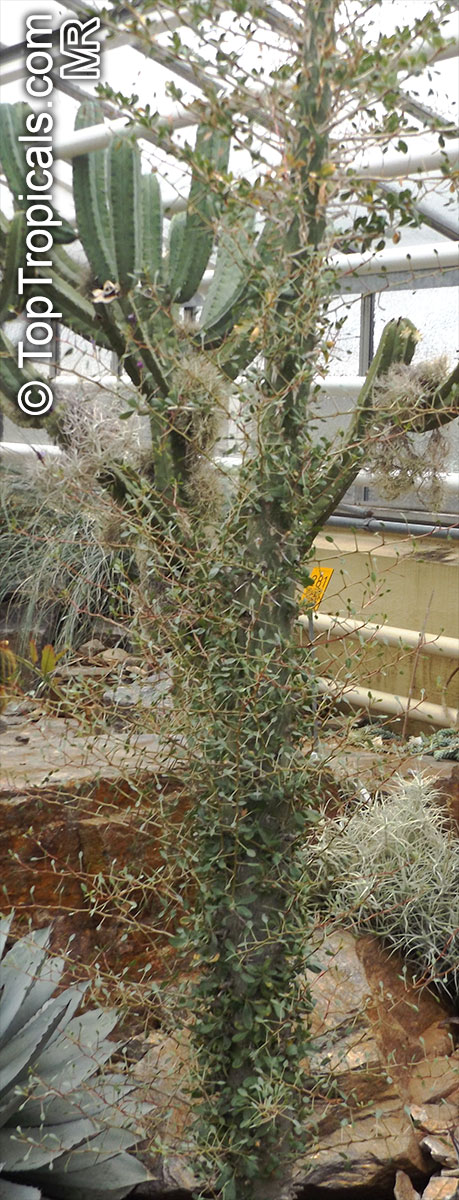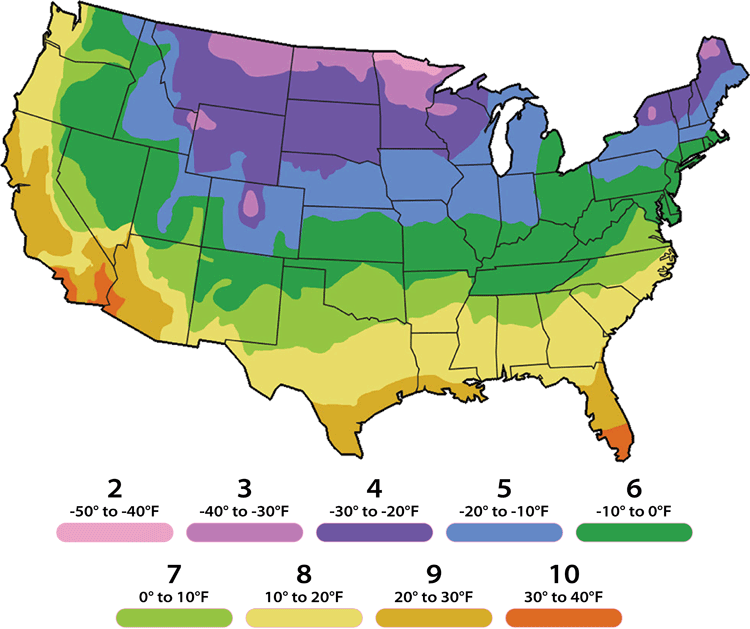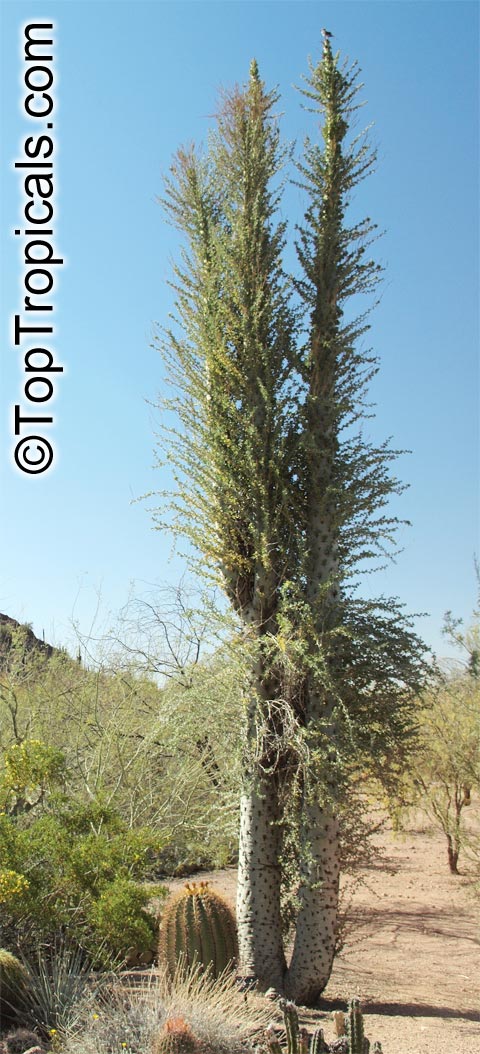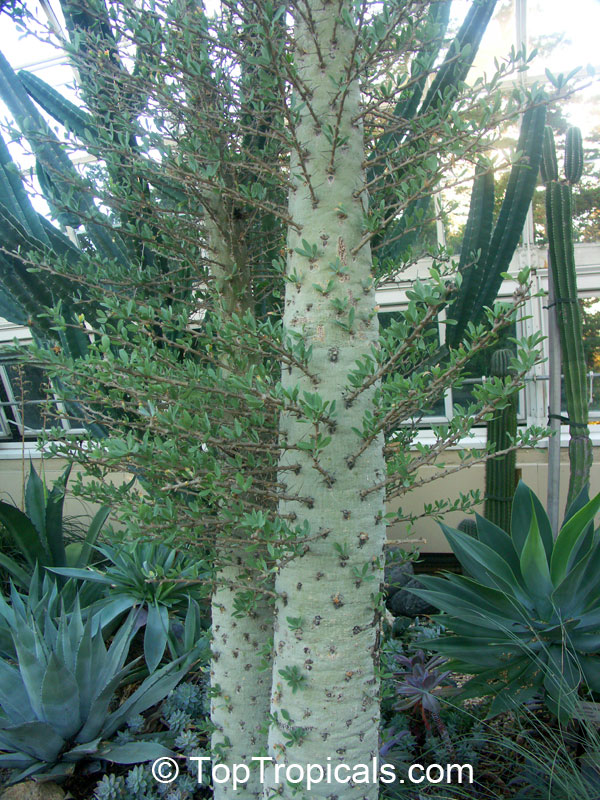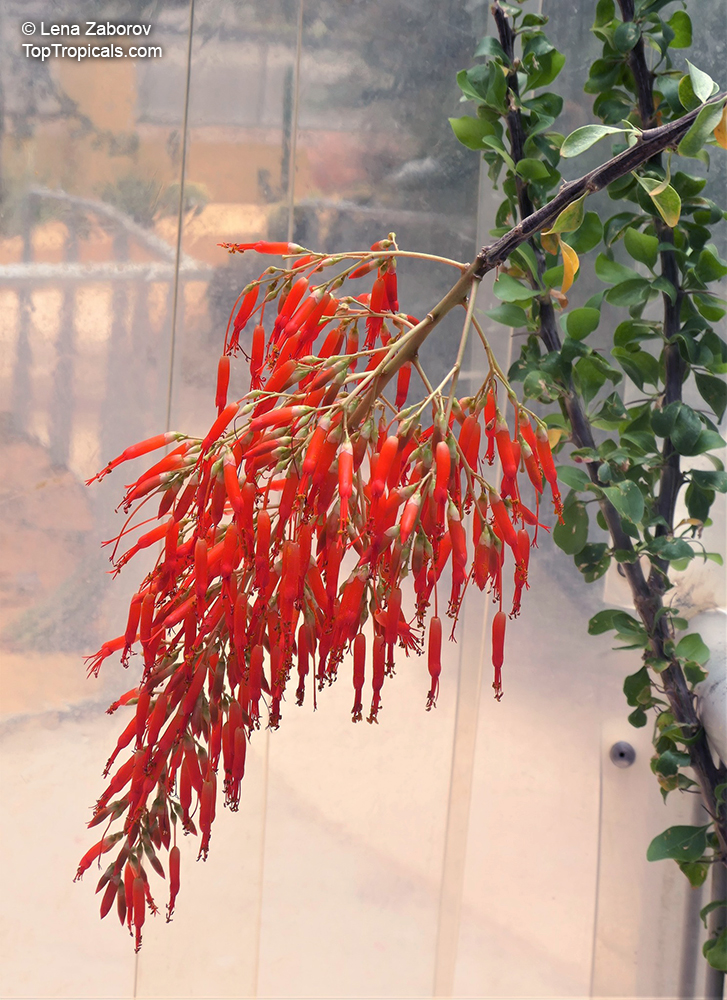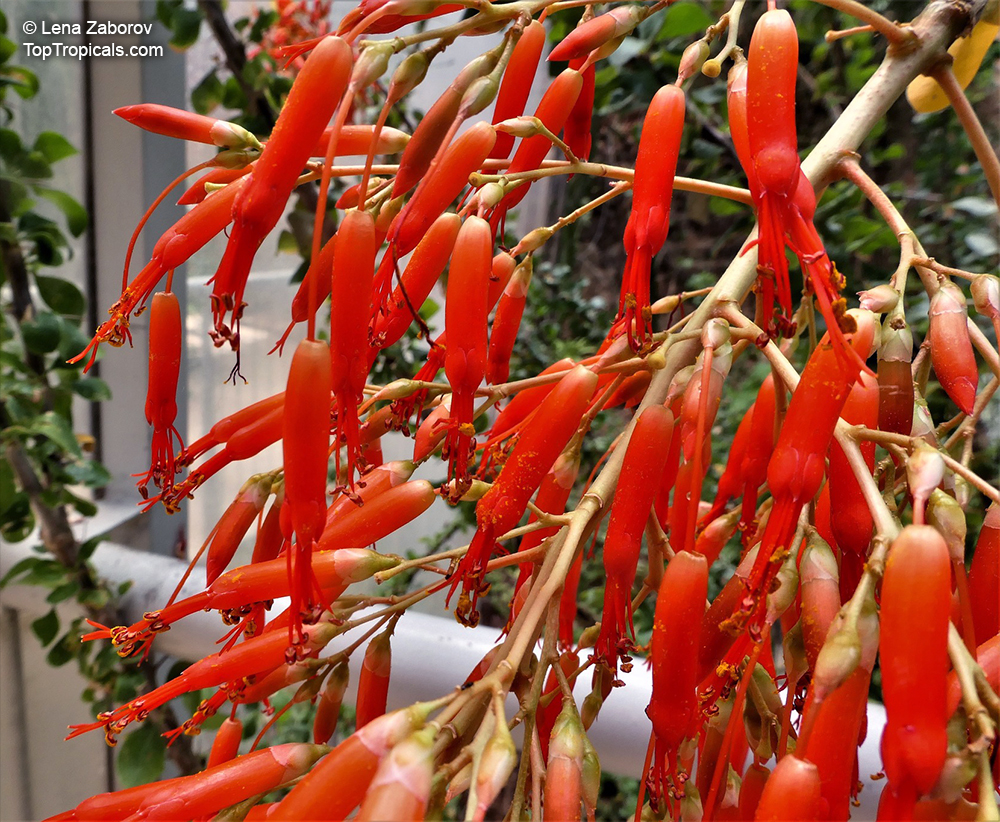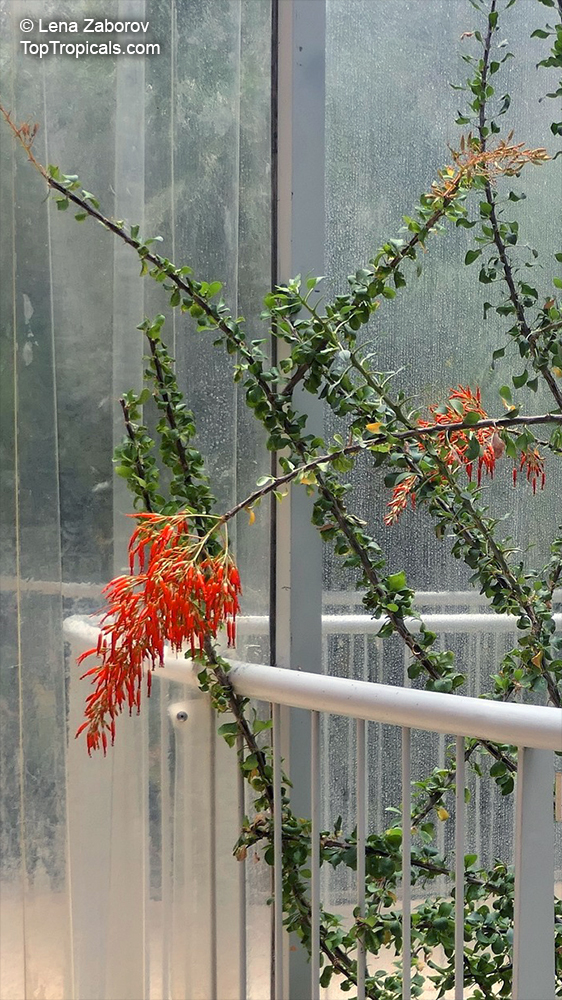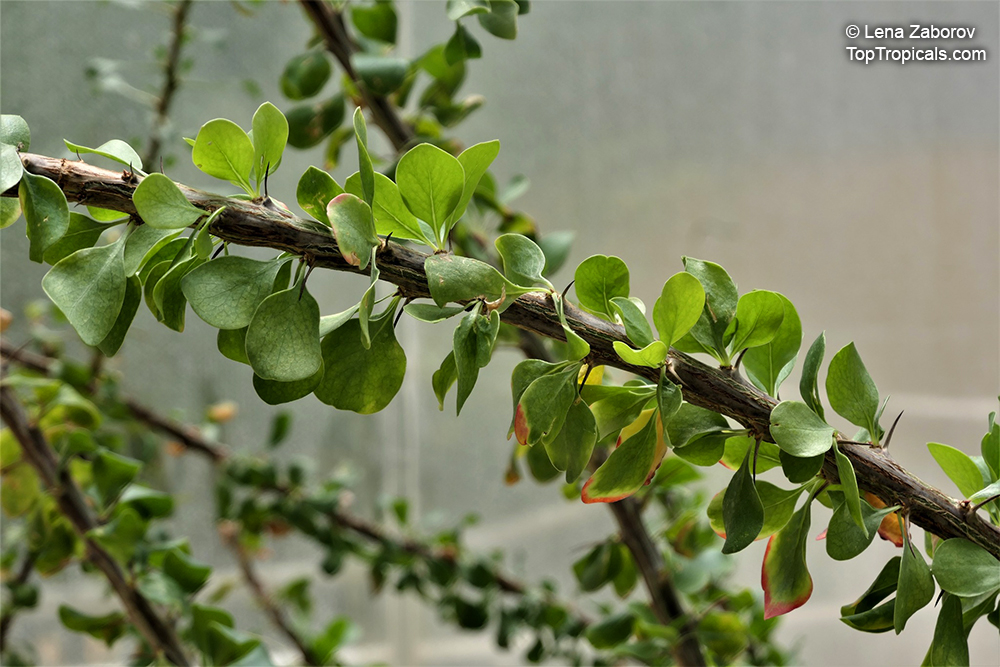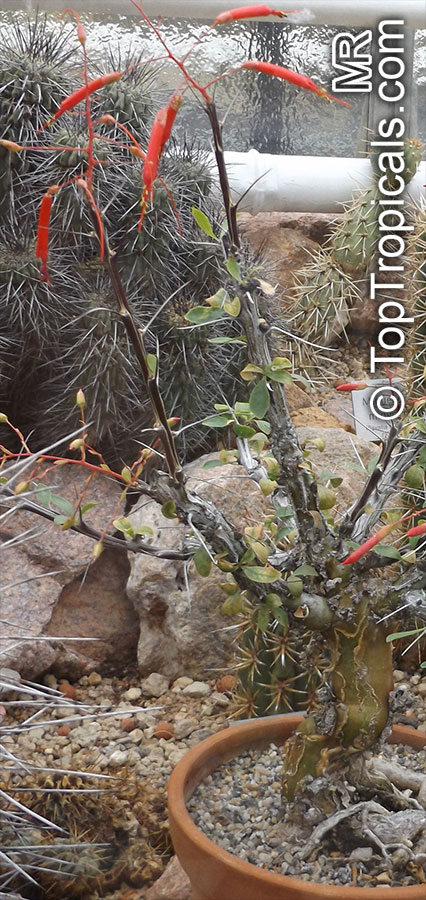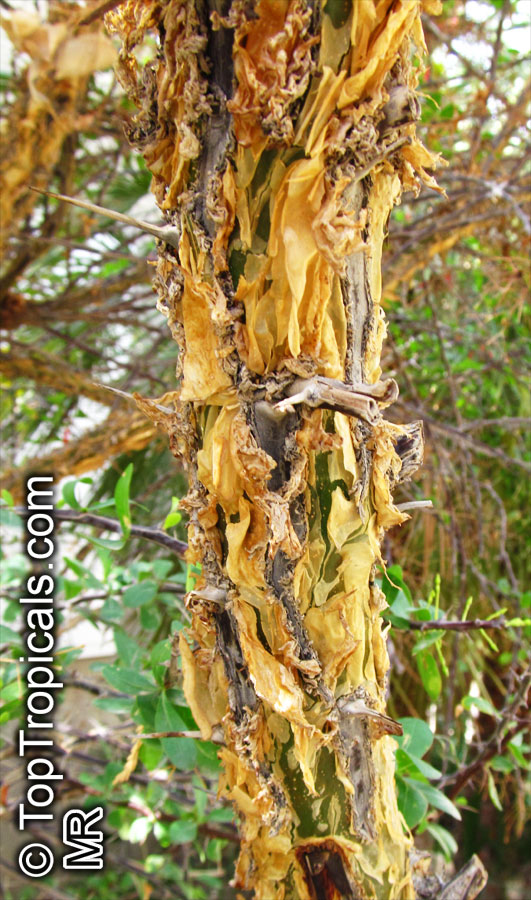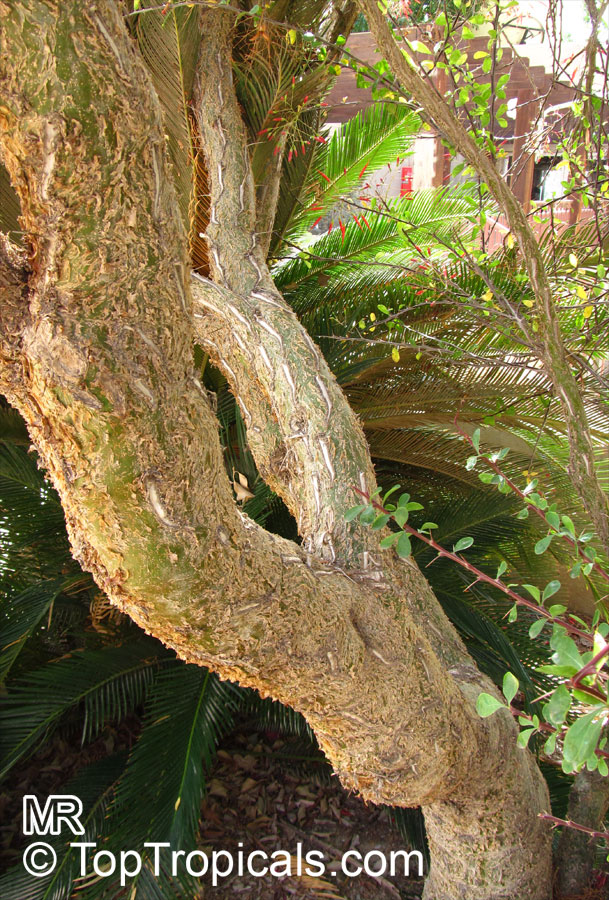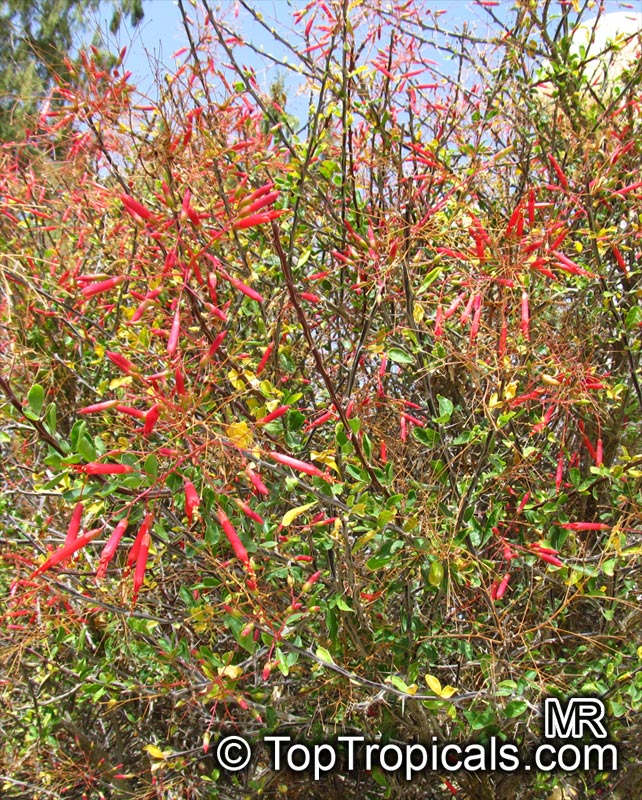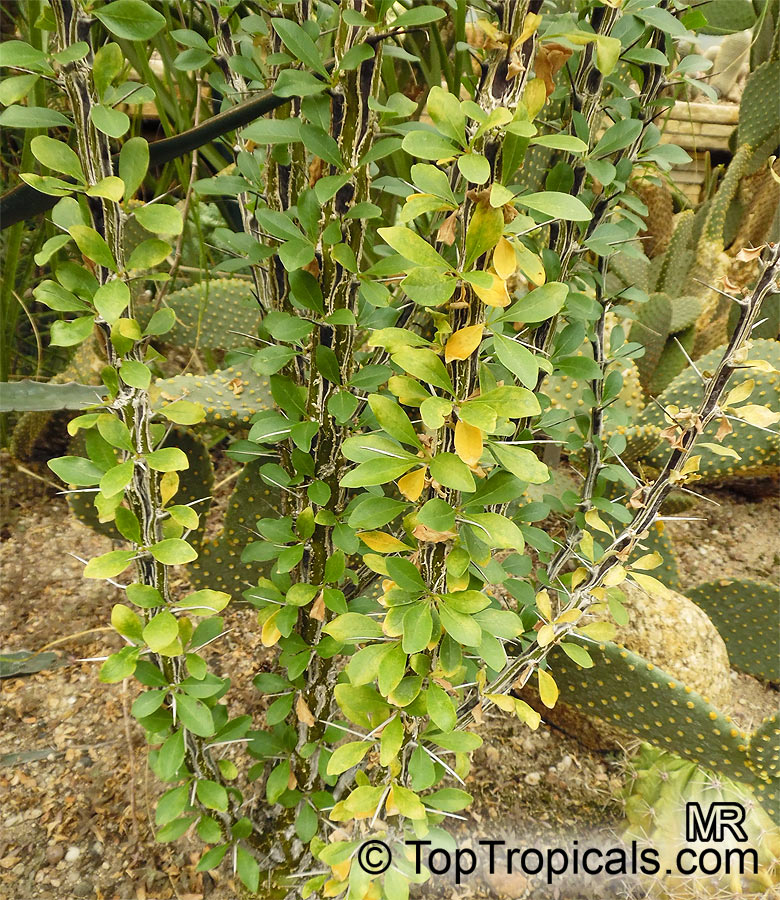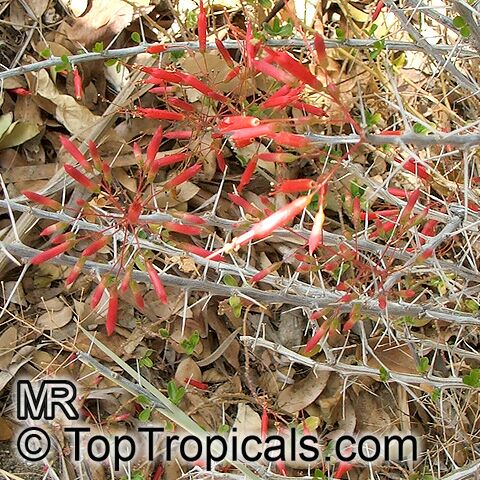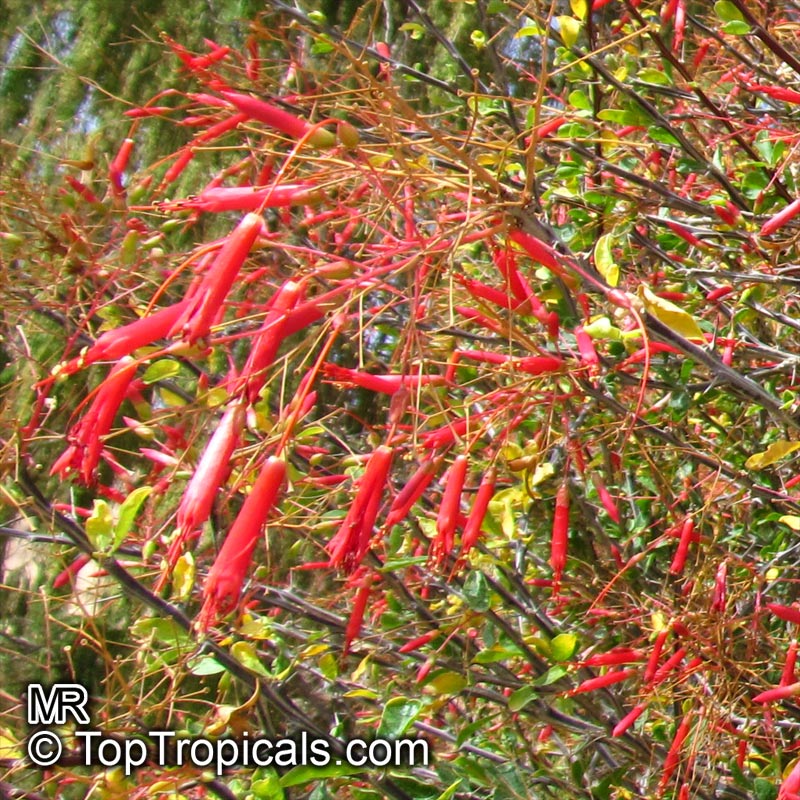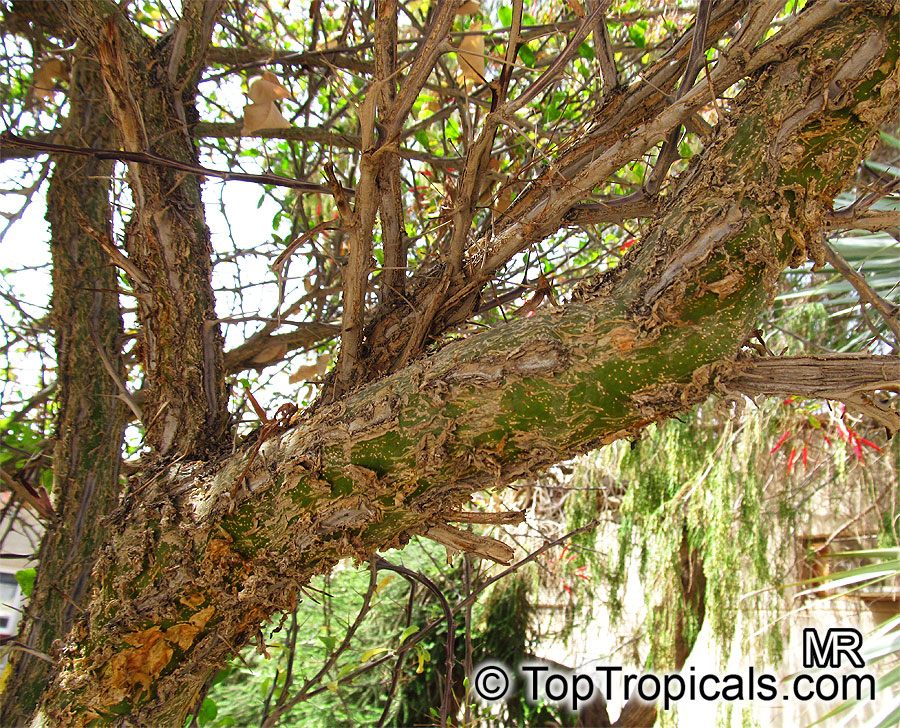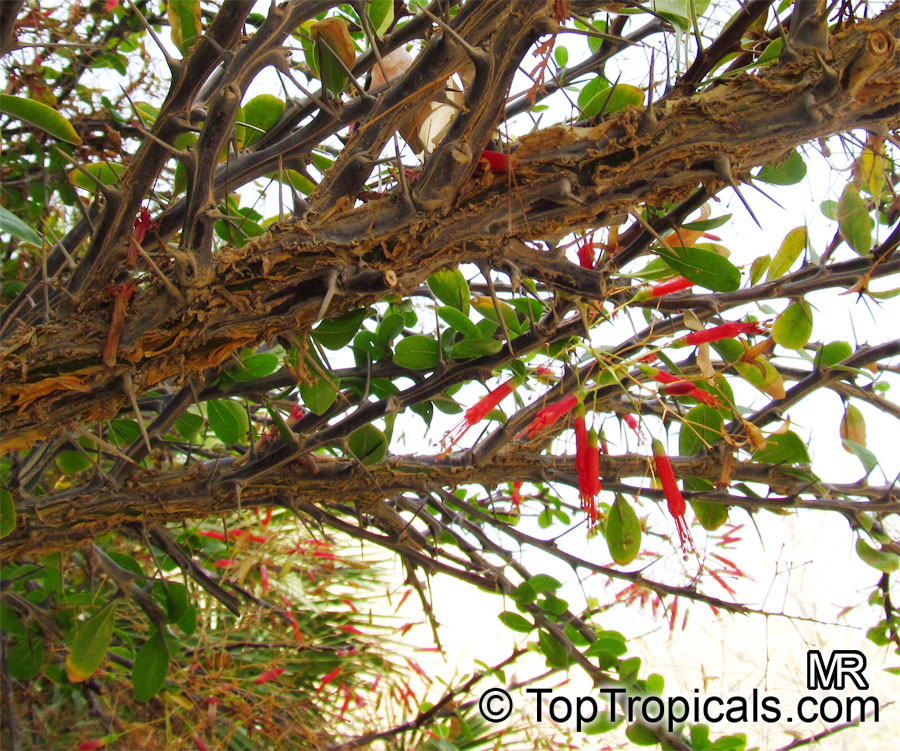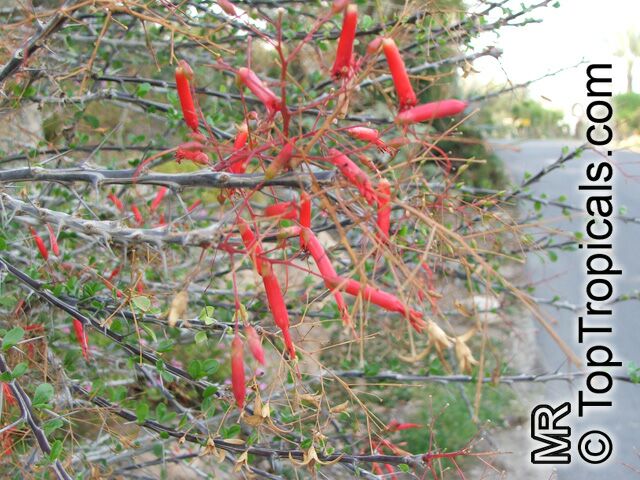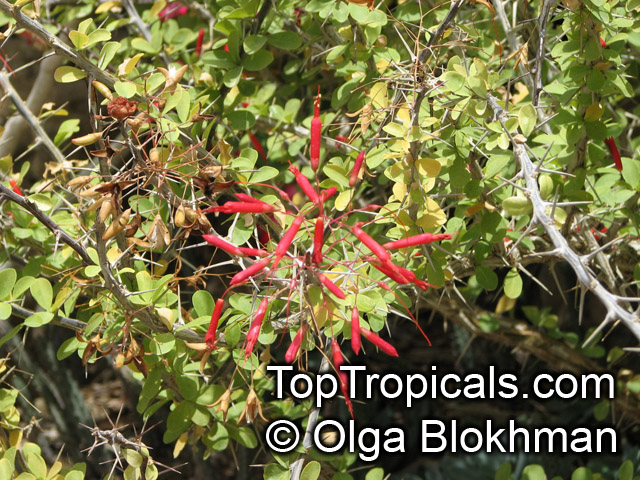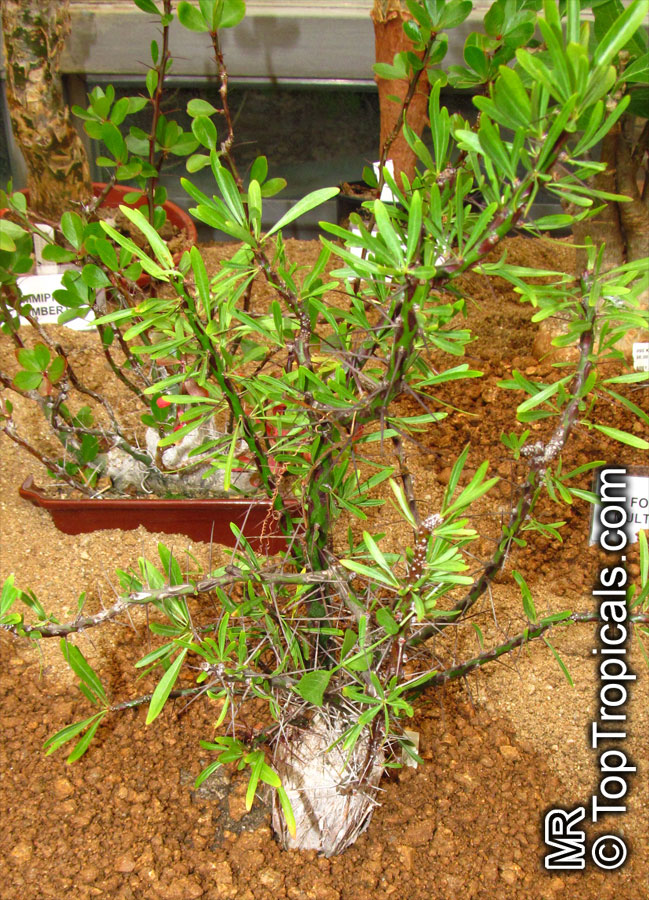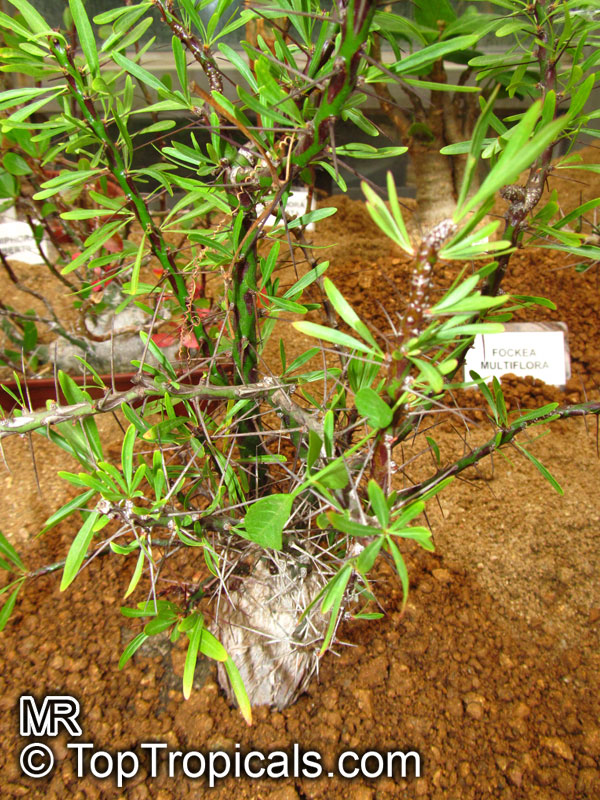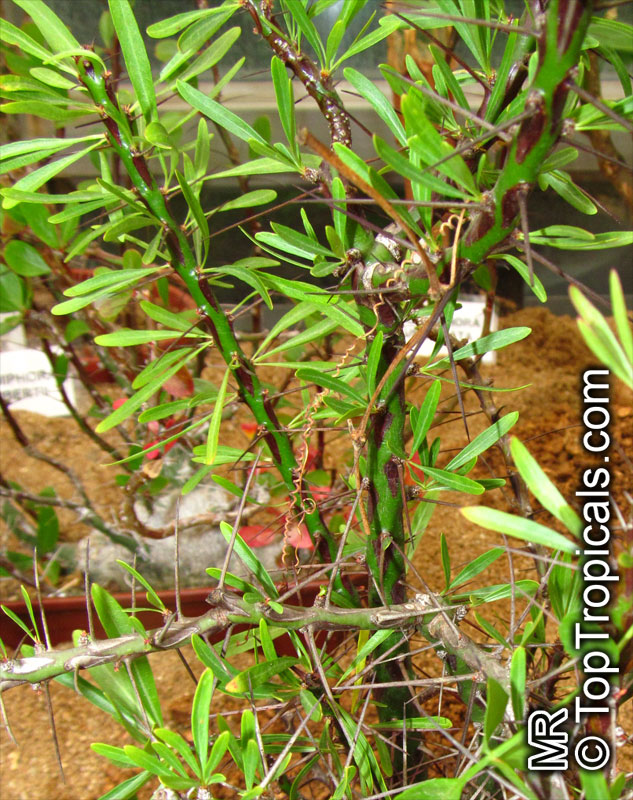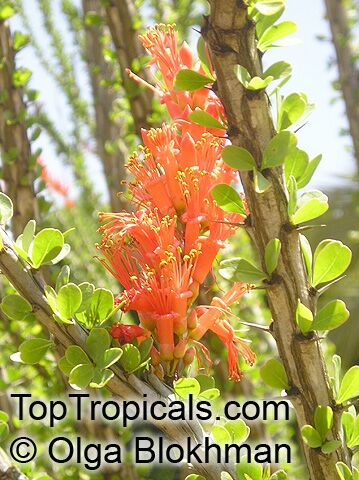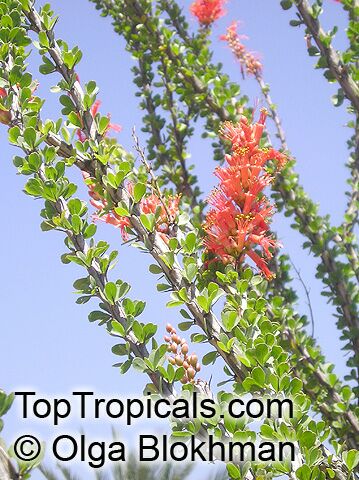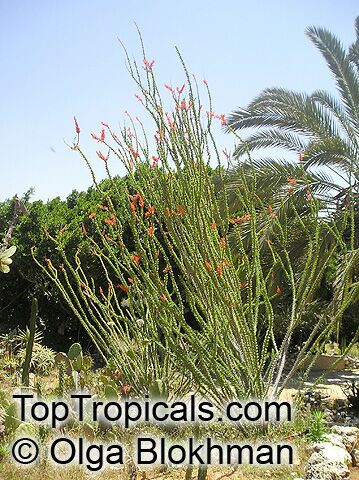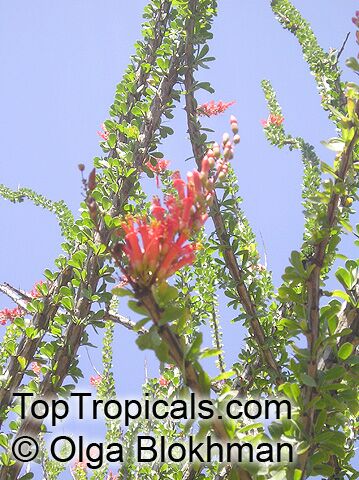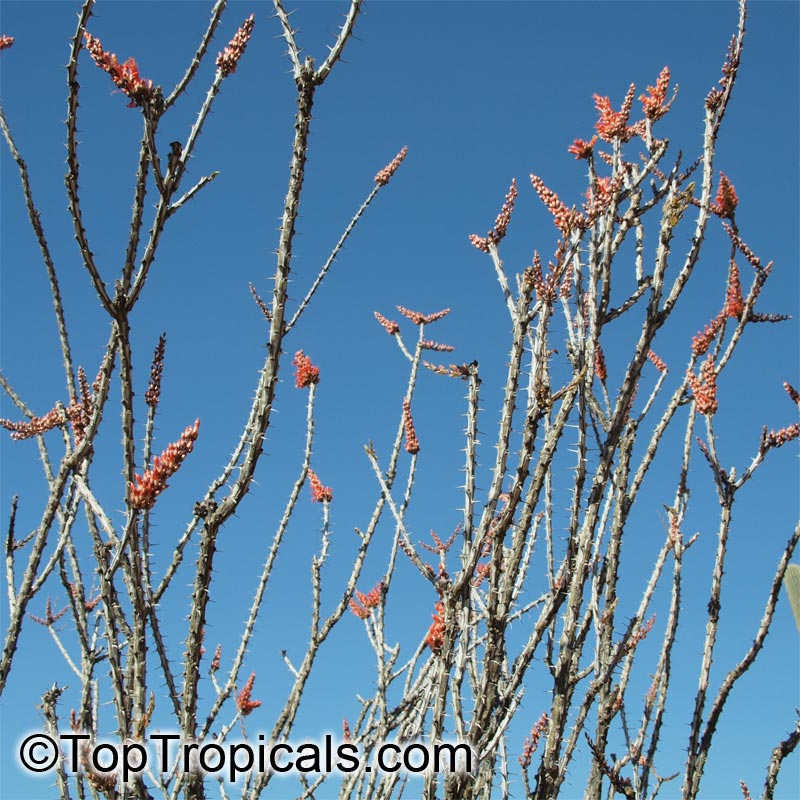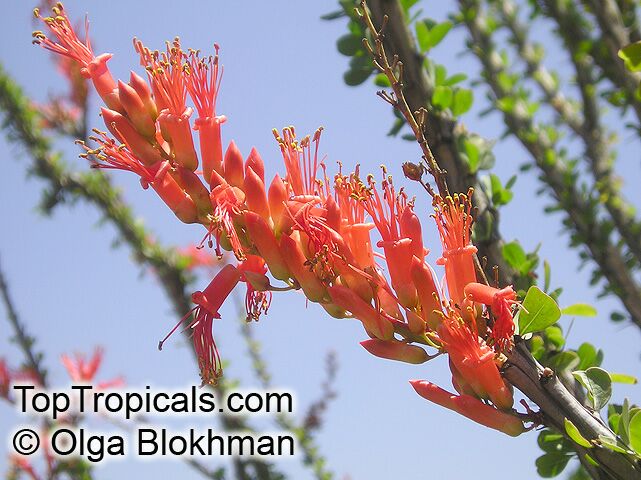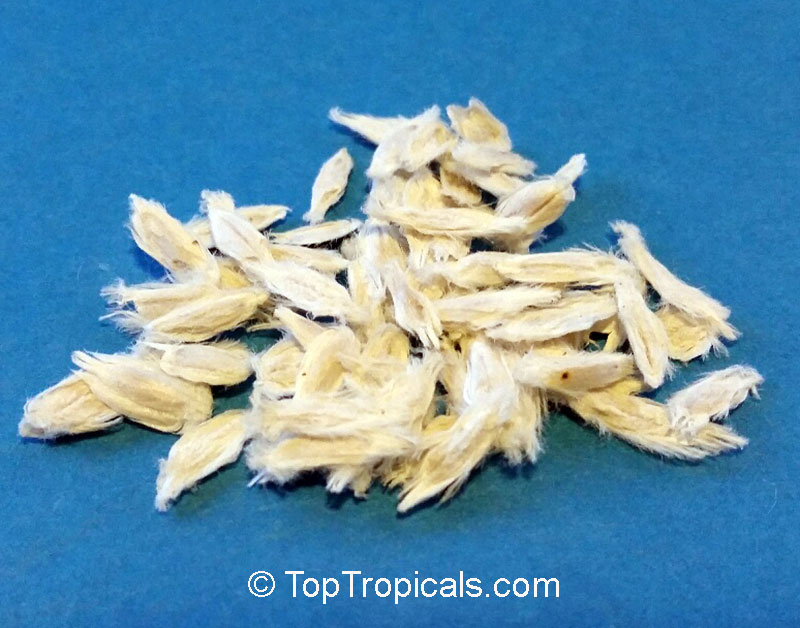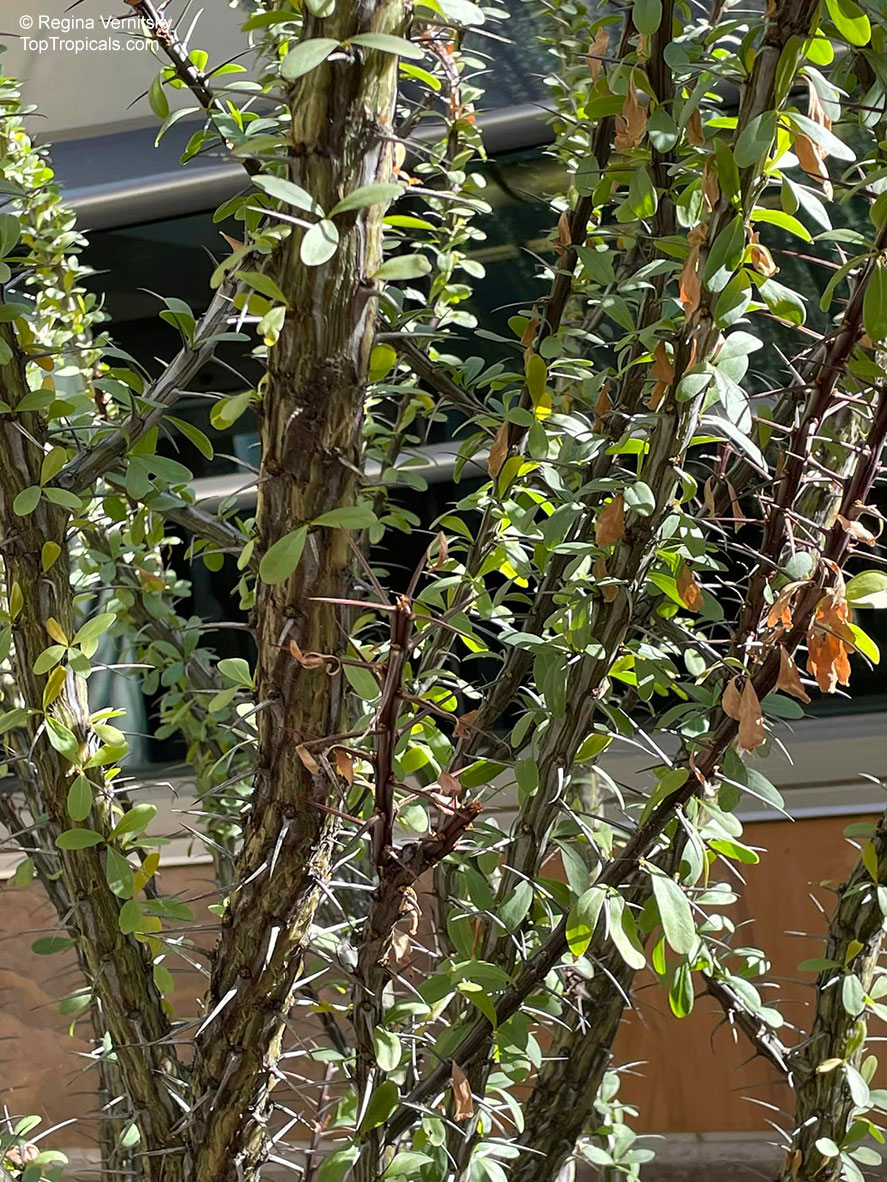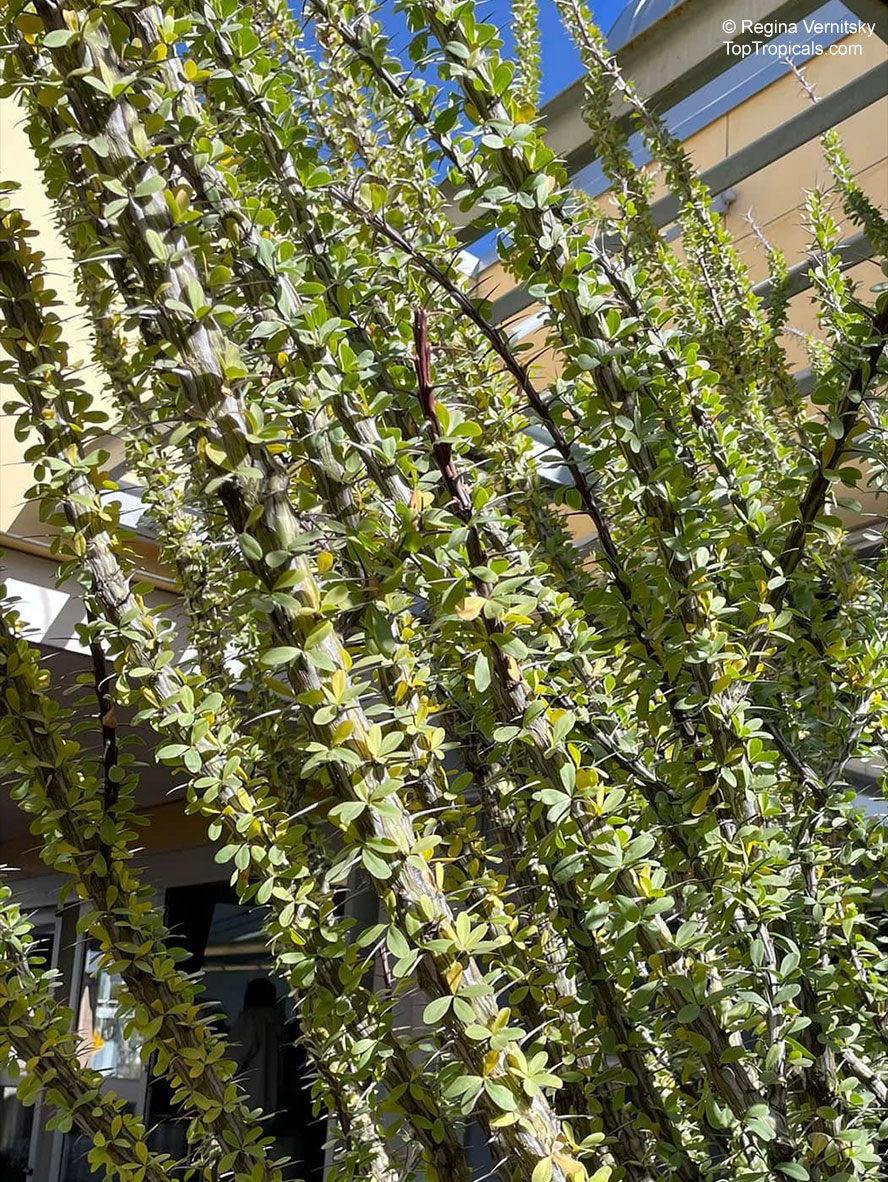Fouquieriaceae - Botanical Family
| Number of plants found: 5 |
Botanical names: Fouquieria columnaris, Idria columnaris
Common name: Boojum Tree
Family: Fouquieriaceae
Origin: Baja California Peninsula









Fouquieria columnaris, or Boojum Tree, is a small tree that is native to the Baja California Peninsula. It does best in a full sun location and moderate water. For colder regions, or regions with dry conditions, it is best to grow this plant in a pot. It is a deciduous species, so it sheds its leaves during the winter season, and grows new leaves during the summer rainy season.
The Boojum Tree can reach a height of 10-20 feet, with a spiny trunk that can reach up to 12 inches in diameter. Its branches are covered with many thorns, making it a great choice for security purposes. The leaves are small, with a silvery-green color, and a feather-like texture. In the spring and summer, clusters of yellow and orange flowers appear, which attract butterflies and hummingbirds.
This plant is well suited to USDA Zones 9-11. It will require more water in the summer, but can tolerate dry conditions in the winter. Pruning should be done in the late winter to remove the dead branches and flowers. This will help it maintain its shape and encourage new growth.
Overall, the Boojum Tree is a unique and attractive plant that is quite easy to grow in the right conditions. It requires minimal maintenance, and its thorns make it an ideal choice for security purposes. Whether you are growing this plant outdoors or in a pot, it can provide your garden with plenty of beauty, color and charm.
Botanical name: Fouquieria diguetii
Family: Fouquieriaceae
Origin: Baja California Peninsula







The small green leaves that line the branches are drought-deciduous, but will remain on the plant with supplemental irrigation. Bright red tubular flowers borne in clusters decorate the cane tips in the spring, attracting hummingbirds.
Botanical name: Fouquieria macdougalii
Common name: Mexican Tree Ocotillo
Family: Fouquieriaceae
Origin: Mexico









Plant will remain semi-evergreen as long as occasional watering is provided. Fouquieria macdougalii (The Mexican Tree Ocotillo) will reach a size of 5 to 10 feet tall. This plant prefers full sun and moderate water when growing. It's native to Mexico, boasting bright and conspicuous crimson to vinous flowers, making it popular among gardeners. This plant is perfect for a splash of vibrant color to any garden. Not only this, but the cheerful blooms also attract butterflies, hummingbirds and other pollinators, making it even more attractive to gardeners alike.
The plant produces sharp spines and thorns, rendering it a great option for landscape gardeners looking for a bit of security as well. As for care, the plant prefers hot and dry conditions and requires only light watering when young. Once established, however, it can withstand moderate drought conditions. As a result, Mexican Tree Ocotillos are a great choice for areas prone to droughts.
Mexican Tree Ocotillos will thrive in any kind of soil. For cold regions, it is perfect for growing in a pot or container as the mature plant can withstand cold hardy of at least mid-20s F for a short time. A generous layer of mulch will also help to protect its roots from the cold. As Fouquieria macdougalii likes to be dry, you should not water to frequently, but don't let the plant dry out completely either. Furthermore, this plant can be pruned to make a better shape.
Overall, Mexican Tree Ocotillo is a desirable choice in the garden due to its vibrant blooms with a woody base and its adaptability to different climates and soil types. With proper growing and care, it can thrive in any garden and make a great addition to its landscape.
Botanical name: Fouquieria splendens
Common names: Ocotillo, Candlewood, Coachwhip, Candlewood, Slimwood, Desert coral, Jacob's staff, Jacob cactus, Vine cactus
Family: Fouquieriaceae
Origin: Southwestern USA










This slow growing deciduous shrub is indigenous to the Sonoran Desert and Chihuahuan Desert in the Southwestern United States (southern California, southern Nevada, Arizona, New Mexico, western Texas), and northern Mexico. The waxy tubular nectar-bearing flowers, produced in dense clusters at the end of the stems in the Spring, are attractive to humming birds, finches, bees and other insects. Later in the year, the flowers are replaced by clusters of decorative orange seed pods. Sporadic flowering can continue through the Summer and Autumn depending on rainfall. Ocotillo is not a true cactus. For much of the year, the plant appears to be an arrangement of large spiny dead sticks, although closer examination reveals that the stems are partly green. With rainfall, the plant quickly becomes lush with small, ovate leaves, which may remain for weeks or even months. The plant branches very heavily at its base, but above that, the branches are pole-like and rarely divide further, and specimens in cultivation may not exhibit any secondary branches. The leaf stalks harden into blunt spines, and new leaves sprout from the base of the spine. The bright crimson flowers appear especially after rainfall in spring, summer, and occasionally fall. Flowers are clustered indeterminately at the tips of each mature stem. Individual flowers are mildly zygomorphic and are pollinated by hummingbirds and native carpenter bees.
They should be planted to the original growing depth and, as with cacti, in their original directional orientation: the original south side of the plant, which has become more heat- and sunlight-resistant, should again face the brighter, hotter southern direction. If their direction is not marked, success is again limited.
Ocotillo plants prefer well-drained, sandy or gravely loam soil with low to moderate amounts of organic content. Ideal locations are sunny, open, unrestricted and those where surface water does not collect. Transplanted plants require irrigation to become established, but once established, they can survive on 8 inches of rainfall per year. Water infrequently to push it to bloom. The ocotillo has sharp spines, so it is better to keep it away from walking paths.
Use link to repeat this search:
https://toptropicals.com/cgi-bin/garden_catalog/cat.cgi?search_op=and&keyword_op=and&language=e&family=Fouquieriaceae
&number=10&no_change_lang=1&user=tt&sale=1&first=0
